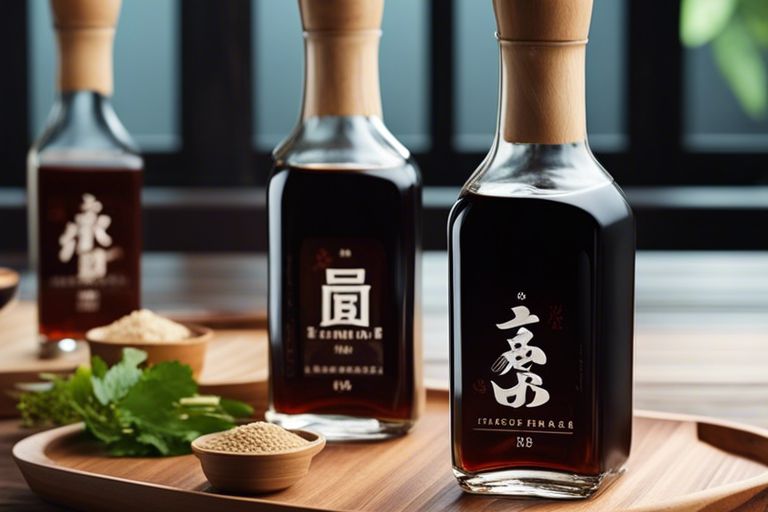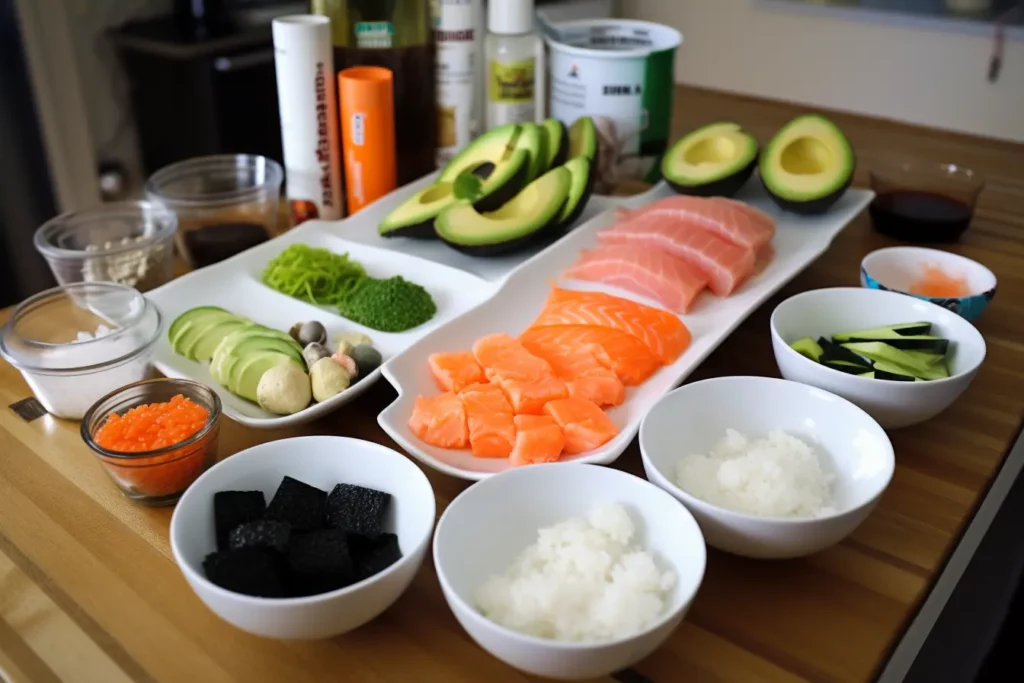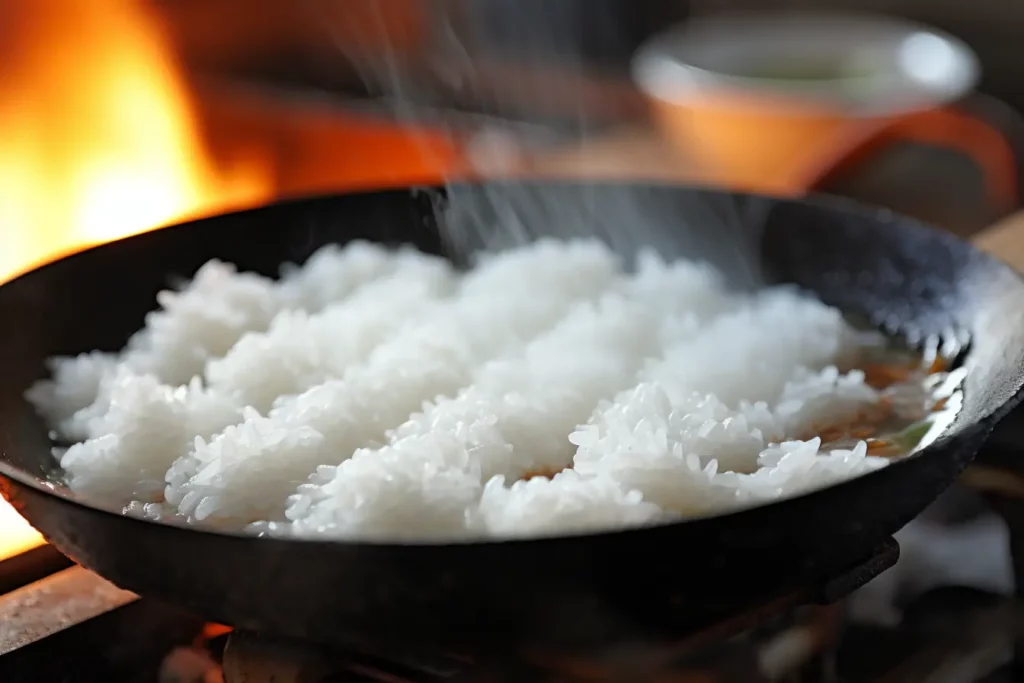Introduction
Soy sauce is an indispensable part of Asian cuisine and is also becoming increasingly popular in the Western world. In this blog post, we want to take a closer look at the different types of soy sauce and how to use them.
The fascinating world of soy sauce
Soy sauce is not just a simple seasoning sauce, but a fascinating component with a long history. It is made from fermented soybeans and can have a variety of flavors and colors depending on the manufacturing process and ingredients.
There are dark and light soy sauce, sweet soy sauce, salty soy sauce, and much more. Each variant has its own characteristics and can be used differently in the kitchen.
Why it’s important to know different types
It is important to know the different types of soy sauce in order to take full advantage of their versatile use in the kitchen. By knowing the differences, we can choose the right soy sauce for specific dishes and flavors.
Soy sauce is a versatile condiment that can be used not only for Asian dishes, but also for marinades, salads and sauces. Choosing the right soy sauce can have a big impact on the taste and quality of the dish.
The History of Soy Sauce
Origin and traditional brewing process
Soy sauce has a fascinating history dating back as far as 2,500 years. It originated in China and later spread to Japan and other parts of Asia. Originally, soy sauce was made by fermenting soybeans and grains, a traditional brewing process that is still practiced in some establishments today.
Global Distribution and Modern Manufacturing Processes
With increasing globalization, soy sauce has also spread all over the world. Nowadays, it is produced not only in Asia, but also in other countries such as the USA and Europe. Modern manufacturing processes often use additional ingredients and can produce different flavors and textures.
Although traditional manufacturing methods are still appreciated, modern processes have made the production of soy sauce more efficient, allowing for a variety of products to meet different taste preferences and dietary needs.
Main Types of Soy Sauce
Soy sauce comes in several main types, which differ in their taste, color, and use. The most well-known types are light soy sauce, dark soy sauce, tamari, and sweet soy sauces such as kecap manis.
Light Soy Sauce – Flavor Profile and Uses
The light soy sauce is characterized by its light color and mild, salty taste. It is mainly used to flavor dishes and gives them a spicy, yet subtle soy note.
Dark Soy Sauce – Characteristics and Culinary Applications
In contrast to the light soy sauce, the dark soy sauce is more intense in taste and darker in color. It has a slightly sweet note and is often used for marinade or added during cooking to give dishes a dark color and rich flavor.
The dark soy sauce has a higher content of molasses and is fermented longer, which gives it a stronger flavor and thicker consistency. Due to its strong seasoning power, it is often used sparingly.
Tamari – Gluten-free alternative and its use in the kitchen
Tamari is a gluten-free soy sauce that stands out for its rich, spicy flavor. It is particularly suitable for people with gluten intolerance and is often used as an alternative to conventional soy sauce.
Tamari works well as a dip, marinade, and to flavor soups and stews. It can also be used as a substitute for traditional soy sauce in most recipes.
Practical tips for using soy sauce
Soy sauce is a versatile condiment that is widely used in Asian cuisine. A good introduction to the use of soy sauce can be found in the article “Soy sauce 1×1: all about the seasoning of Asia”.
Dosage and combination with other ingredients
The dosage of soy sauce depends on your personal taste and the dish you are preparing. As a rule of thumb, less is often more, as soy sauce is very salty. Start by tasting with a small amount and adjust as needed. You can also combine soy sauce well with other ingredients such as ginger, garlic, and sugar to make a delicious marinade or gravy.
Creative ideas for marinades, dressings, and more
The use of soy sauce is not limited to classic dishes. You can also use soy sauce for creative purposes, such as making marinades for meat, as an ingredient in salad dressings, and even enhancing soups and stews. Unleash your creativity and experiment with different flavors and textures to discover unique flavor combinations.
For more creative ideas and recipes for using soy sauce, check out our detailed article “Soy sauce 1×1: all about the seasoning of Asia”. Get ready to take your dishes to a whole new level of aroma!
Inference
After studying the different types of soy sauce and their uses, we can draw conclusions that will help us make the right choice for our dishes.
Summary of Soy Sauce Variety
The variety of soy sauces ranges from light soy sauce to dark soy sauce and sweet soy sauce. Each species has its own taste characteristics and uses to discover. When cooking, it is important to choose the right soy sauce according to the desired taste and color of the dish.
The importance of making the right choice for the taste of your dishes
Choosing the right soy sauce for your dishes can have a significant impact on the taste. The lighter soy sauce works well for preserving the natural color of the ingredients, while the darker soy sauce gives a bolder flavor and color. Choosing the right soy sauce can improve the authenticity and flavor of your dishes.
When using soy sauce, it is important to pay attention to the quality and origin. A high-quality soy sauce, carefully made, can greatly improve the taste of your dishes and give them a unique touch.
FAQ
Q: What is soy sauce?
A: Soy sauce is a spicy, brown liquid made by fermenting soybeans, wheat, salt, and water.
Q: What are the different types of soy sauce?
A: There are mainly three types: light soy sauce, dark soy sauce, and tamari. Each variety has its own specific characteristics and applications.
Q: How do the different types of soy sauce differ?
A: Light soy sauce is saltier and spicier in flavor and is often used for seasoning and marinating. Dark soy sauce is less salty and has a bold color, and is mainly used to color dishes. Tamari is a gluten-free soy sauce that has a rich, bold flavor and is often used in Japanese cuisine.
Q: How is soy sauce used?
A: Soy sauce is used in various recipes to enhance the flavor and flavor. It can be used to flavor meat, vegetables, soups, rice dishes, and noodles.
Q: Does soy sauce make every dish salty?
A: No, soy sauce can also be used in small amounts to add a rich umami note to a meal without salting it. It is important to adjust the amount of soy sauce according to the recipe and personal taste.


